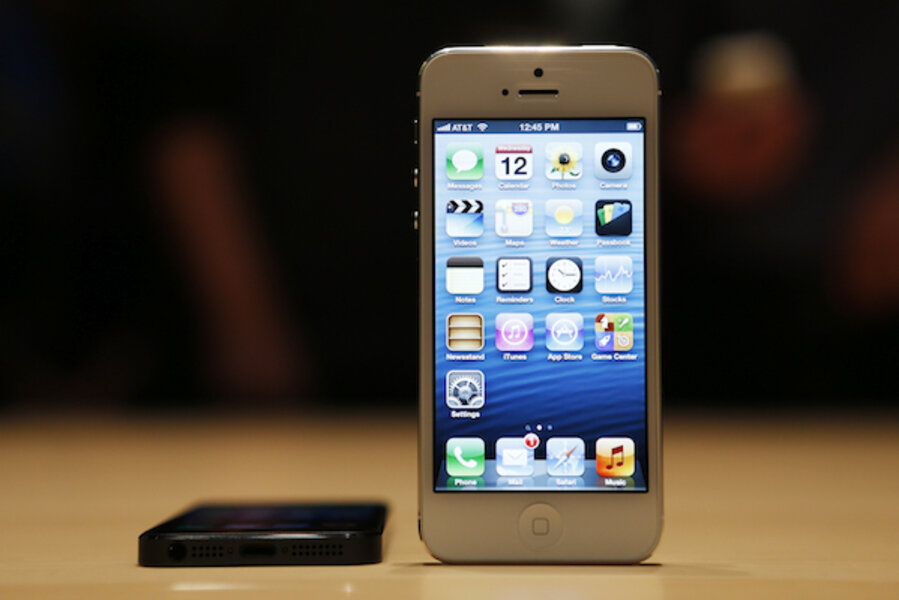iPhone 5 reviews: The verdict on the new Apple smart phone is in
Loading...
Friday marks the official launch of the iPhone 5. Expect long lines at Apple stores, a throbbing hurricane of media hype, and probably another boost to Apple stock, which earlier this week topped $700 per share – an all-time high for the Cupertino tech titan. But just how good is the iPhone 5, exactly? Well, according to a range of reviews posted to the Web today, it's very good indeed.
"On balance," Walt Mossberg writes at The Wall Street Journal, "I still consider the iPhone the best smartphone on the market." Mossberg singles out for praise the snappiness of the device: "Apple has finally connected the iPhone to the fastest cellular data network, called LTE, and data downloads and uploads just fly, even when you aren't on Wi-Fi," he writes. "Also, the processor now has twice the previous speed."
Of course, as we've noted, the iPhone 5 is not an aesthetic leap forward for the Apple smart phone. It's got an aluminum back, instead of glass, but it retains the boxy look and hard edges of the iPhone 4. Still, Henry McCracken of Time is fine with the looks of the device, which he calls a "refinement." Despite the taller screen, he writes, the iPhone 5, is an "exemplary one-handed phone: You can cradle it in your palm and use your thumb to type."
About that screen: Does the added half-inch yield a radically new experience?
"It’s a nice but not life-changing change," answers David Pogue of The New York Times. "You gain an extra row of icons on the Home screen, more messages in e-mail lists, wider keyboard keys in landscape mode and a more expansive view of all the other built-in apps. (Non-Apple apps can be written to exploit the bigger screen. Until then, they sit in the center of the larger screen, flanked by unnoticeable slim black bars.)"
Horizons readers will remember that Apple has made its own in-house mapping service the de-facto maps app on the iPhone 5 – gone is Google Maps, which had been a staple of the iPhone since the first iteration of the phone. So how does Apple's offering stack up?
"Google had beaten Apple to the punch with audio turn-by-turn directions for Android. Apple has generally done a very good job with its own turn-by-turn feature, which I tested driving in San Francisco and the greater New York City area," writes Edward Baig of USA Today. "The Maps app includes real-time traffic and accident alerts, and a feature called Flyover, photo-realistic 3-D imagery of landmarks as you zoom in over major cities."
And now on to the elephant in the room: Lightning, the replacement for the iPhone dock connector of yore. Apple says Lightning makes transfers much faster, but it causes a whole lot of compatibility issues: no longer will your old iPhone and iPad cords work on the iPhone 5.
"A lot of people are upset that they’re going to need adapters for their old accessories," argues MG Siegler of TechCrunch. "But that’s the price of progress. The Lightning connector is tiny compared to the old 30-pin connector, and the ability to plug it in with either side facing upwards is nice. I’m also not going to miss the pocket lint build up in the long port at the bottom of the iPhone."
Already planning on picking up an iPhone 5? Drop us a line in the comments section. And to receive regular updates on how technology intersects daily life, follow us on Twitter @venturenaut.







